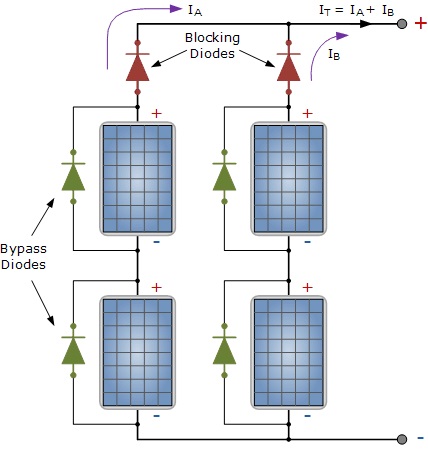In solar power systems, diodes play a critical role in ensuring the efficiency and safety of the system. Two common types of diodes used between batteries or inverters and solar panel arrays are bypass diodes and blocking diodes.
- Bypass diodes: These are often integrated into solar panels and are used to mitigate the effects of shading or mismatched cells in a photovoltaic array. When a part of a solar panel is shaded, it can significantly reduce the power output of the entire panel. Bypass diodes allow the current to flow around the shaded portion, preventing the loss of power generation. This helps in maintaining the overall efficiency of the solar panel array.
- Blocking diodes: These diodes are used to prevent reverse current flow in a system, protecting the components from potential damage. In the context of solar power systems, blocking diodes are placed between the solar panels and the batteries or inverters to ensure that energy generated by the panels does not flow back into the panels during periods of low light or at night. This feature is crucial for preventing power loss and maintaining the integrity of the system.
Both types of diodes are essential for managing the flow of current within a solar power system, preventing damage due to reverse current or shading, and ensuring the overall efficiency and longevity of the system. They help to maintain the proper flow of electricity and protect the components from potential damage, thereby contributing to the overall stability and performance of the solar power system.


